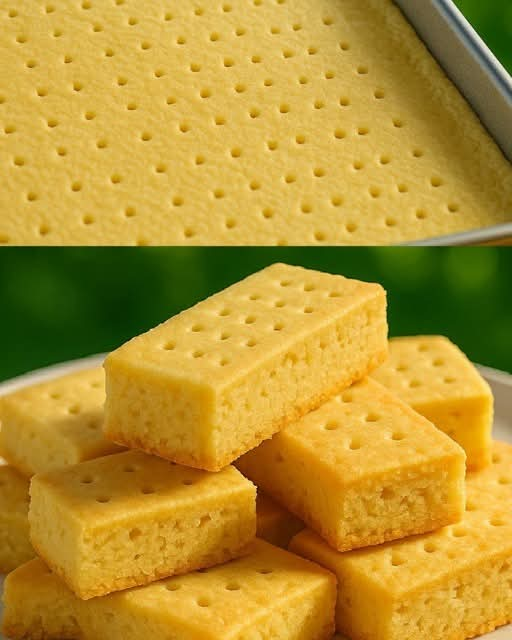Sure! Here’s a comprehensive and engaging full guide for Classic 3-Ingredient Shortbread Cookies, covering everything from history and benefits to a big-batch recipe and methods — ideal for holiday baking, gift-giving, or satisfying sweet cravings.
Classic Shortbread Cookies (3 Ingredients) Recipe Guide
Introduction
Shortbread cookies are one of the oldest and most beloved types of cookies in the world. With a melt-in-your-mouth texture, rich buttery flavor, and simple preparation, these cookies have stood the test of time. Originating in Scotland and loved globally, shortbread is a must-have during holidays like Christmas, weddings, tea parties, and special occasions. This guide provides a large-batch recipe perfect for sharing, selling, or storing.
Ingredients (Big Batch – Yields about 5 dozen cookies)
- 4 cups (8 sticks) unsalted butter, softened
- 2 cups granulated sugar
- 8 cups all-purpose flour
Optional Add-ins:
- 1 tsp vanilla extract or almond extract
- ½ tsp salt (if using unsalted butter and prefer a touch of salt)
- Sanding sugar or chocolate for decoration
Instructions
Step 1: Cream the Butter and Sugar
In a large bowl, beat the softened butter and sugar together until light and fluffy (about 3–4 minutes). This step is crucial for a soft, crumbly texture.
Step 2: Add the Flour
Gradually add the flour, one cup at a time, mixing just until incorporated. Do not overmix. The dough will be soft and slightly crumbly but should hold when pressed together.
Step 3: Chill the Dough
Form the dough into 2 disks or logs, wrap in plastic wrap, and refrigerate for at least 30–60 minutes. This helps the cookies retain their shape during baking.
Step 4: Shape the Cookies
Preheat oven to 325°F (163°C). Roll the dough out to ¼-inch thickness on a floured surface. Cut into shapes or slice rounds from the logs. Place on a parchment-lined baking sheet.
Step 5: Bake
Bake for 12–16 minutes or until the edges are just beginning to turn golden. Do not overbake. Let them cool on the sheet for 5 minutes before transferring to a wire rack.
Formation Ideas (Shapes and Styles)
- Classic Rounds: Roll into a log, chill, and slice into coins.
- Fingers/Bars: Roll and cut into rectangles – the traditional Scottish shape.
- Cut-out Shapes: Use festive cookie cutters for holidays.
- Thumbprints: Press in the center and fill with jam or chocolate.
- Dipped in Chocolate: Dip cooled cookies in melted dark or white chocolate.
History of Shortbread
Shortbread traces back to Scotland in the 12th century, where it evolved from leftover bread dough that was sweetened and dried in ovens. Mary, Queen of Scots, adored a version flavored with caraway seeds. The cookie became a staple of Scottish culture, often served during Hogmanay (New Year) and Christmas.
Health Benefits (in moderation)
- Energy Boost: Butter and sugar provide quick energy.
- No Eggs or Leaveners: Ideal for those with egg allergies.
- Simple Ingredients: No artificial preservatives or chemicals.
- Customizable: You can easily add nuts, zest, or whole grains.
Nutritional Information (Per Cookie, Approx.)
- Calories: 120
- Fat: 7g
- Carbohydrates: 12g
- Sugar: 4g
- Protein: 1g
(Note: Values may vary depending on cookie size.)
Lovers of Shortbread Cookies
Shortbread is adored by:
- Traditional bakers for its history and simplicity
- Holiday lovers for festive shapes and rich flavor
- Kids and elders alike for its melt-in-your-mouth texture
- Tea-time enthusiasts who pair them with hot beverages
- Bakers with dietary limitations (egg-free, no leaveners)
Conclusion
Shortbread cookies are timeless, versatile, and incredibly easy to make with just three simple ingredients. Whether you’re a novice baker or a seasoned one, these cookies deliver maximum flavor with minimum effort. Bake a big batch, gift them, or freeze them for later — they’re guaranteed to bring joy and nostalgia to any table.
Would you like me to design a printable version or label for packaging them as gifts or sales?
